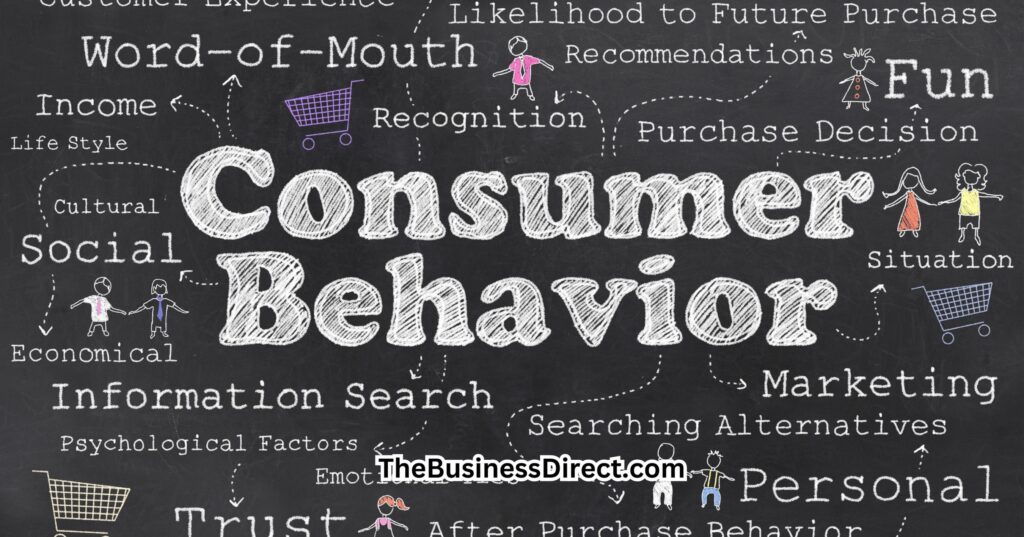As e-commerce has become more popular, businesses must begin to think outside the box regarding marketing.
B2C segmentation involves categorizing consumers by considering their demographics, psychographics, lifestyle, and purchasing habits.
It is no longer a one-size-fits-all solution when targeting different potential customers.
Instead, many businesses are focusing on segmentation – specifically B2C (business-to-consumer) marketing segmentation.
By understanding and leveraging each of the following market segmentation, you can successfully develop targeted strategies that appeal to your customer base and attract more business.
Keep reading to learn about which of the following are B2C marketing segments and how they can help you create effective campaigns!

Demographics – Age, Gender, Race, Income Level
Age
Age is a vital factor in marketing segmentation.
Different age groups have unique needs, preferences, and buying habits.
Thus, tailoring your marketing strategies according to age demographics can effectively reach and resonate with the targeted audience.
Gender
Gender segmentation involves creating marketing strategies based on gender-specific preferences.
It helps design products, messages, and campaigns that cater specifically to the tastes and requirements of each gender.
Race
Race-based segmentation allows businesses to cater to the specific needs and preferences of various racial and ethnic groups.
This approach acknowledges the cultural diversity among consumers and can help businesses tap into new markets by offering culturally relevant products and services.
Income Level
Income level segmentation is crucial for pricing strategies and product placement.
Consumers with different income levels have varied spending habits and perceived value for money.
Understanding this allows businesses to position their products effectively within the market, catering to high-end and cost-conscious customers.

Geographic – Region or Location
Region or Location
Region or location-based segmentation is a powerful marketing tool that tailors strategies based on the geographical location of the target audience.
This can include countries, cities, neighborhoods, or even specific postal codes.
Geographic segmentation considers various elements, such as climate, population density, and cultural preferences, directly influencing consumer behavior.
For instance, a company selling winter apparel would target colder regions more aggressively. Similarly, a fast food brand might focus on densely populated urban areas.
Leveraging geographical segmentation can lead to more personalized marketing, improving customer engagement and increasing conversions.
Psychographics – Personality traits, life stage, values
Personality Traits
Personality traits segmentation involves dividing consumers into groups based on their personality, motives, or lifestyles.
For instance, a company selling outdoor gear may target adventurous consumers who love outdoor activities.
Understanding your target audience’s personality traits can help create resonate advertisements, increasing customer engagement.
Life Stage
Life stage segmentation clusters consumers according to different stages of life, such as single, married, parents, retirees, etc.
Marketing strategies tailored to a consumer’s life stage can have a significant impact. For example, a company selling baby products would target new parents.
This enables businesses to deliver relevant messages and offerings to their customers.
Values
Values-based segmentation involves categorizing consumers based on their beliefs and values. For example, a brand selling eco-friendly products may target consumers who value sustainability and environmental conservation.
This segmentation helps businesses align their products and services with the values of their target audience, creating a stronger connection and improving brand loyalty.

Behavioral – Attitudes, Customer Loyalty, Purchase History
Attitudes
Attitudes form a significant part of behavioral segmentation.
Various factors shape them, including personal beliefs, experiences, and social norms.
For example, a customer’s attitude towards a brand can be significantly influenced by their perception of its quality, reputation, and customer service.
By understanding the attitudes of their target audience, companies can tailor their marketing approach to address these factors and foster a positive brand image.
Purchase History
Purchase history is another critical component of behavioral segmentation.
Businesses can draw valuable insights into their buying habits, preferences, and frequency by analyzing a customer’s past purchases.
This data can predict future behavior, enabling companies to send personalized recommendations, offers, and discounts most likely to appeal to each customer.
Customer Loyalty
Customer loyalty is a vital aspect of behavioral segmentation.
It gauges the likelihood of a customer repeatedly purchasing from a company over time.
Loyal customers are a valuable asset as they provide consistent business and serve as brand ambassadors by recommending the brand to others.
Companies can cultivate customer loyalty by understanding and meeting their needs, delivering excellent customer service, and rewarding loyalty with exclusive offers and benefits.
Thus, customer loyalty plays a significant role in enhancing a company’s profitability and market share.
Technographic – Devices customers use to access your services or products
Technographic Segmentation
Technographic segmentation is the categorization of consumers based on their usage of technology.
This can include the types of devices they use, their preferred online platforms, software, and applications, or how tech-savvy they are.
Understanding these aspects enables a business to streamline its digital marketing strategies. For instance, if a significant portion of your customer base accesses your services via mobile devices, optimizing your website for mobile viewing or even developing a dedicated mobile app would be prudent.
Technographic segmentation, thus, is a critical tool for enhancing user experience, boosting engagement, and driving conversions in our increasingly digital world.
Generational – Millennials, Gen Xers, and Baby Boomers
Generational Segmentation
Generational segmentation divides the market into groups based on the generation they belong to, such as Baby Boomers, Generation X, Millennials, and Generation Z.
Each generation has unique characteristics, preferences, and behaviors shaped by their formative years’ social, political, and economic events.
Baby Boomers: Born between 1946 and 1964, they value face-to-face interaction and are less tech-savvy. Often, they prefer traditional forms of communication and marketing.
Generation X: Born between 1965 and 1980, they are known for balancing traditional and digital habits.
Therefore, multi-channel marketing strategies could be effective.
Millennials: Born between 1981 and 1996, they are tech-savvy and value authenticity and experiences.
Social media platforms are a crucial marketing channel for this demographic.
Generation Z: Born after 1997, they are digital natives who prioritize diversity, inclusivity, and sustainability.
They prefer authentic, interactive content and are highly influenced by social media and influencers.
Conclusion
Understanding the various B2C marketing segmentations is integral to creating effective marketing strategies. The article explores several segments: demographics, psychographics, behavioral, technographic, and generational categories. Each piece provides unique insights about your target audience, enabling personalized and more effective marketing. Businesses asking, “Which of the following are B2C marketing segmentations?” will find comprehensive answers within this article. These segmentations allow a more nuanced understanding of consumer behavior, leading to more targeted and successful marketing campaigns.
FAQs
Which of the following refers specifically to how people act when buying goods and services for personal consumption?
The term that refers explicitly to how people act when buying goods and services for personal consumption is ‘Consumer Behavior.’ This concept involves understanding the decision-making processes of buyers, both individually and in groups, such as how emotions affect buying behavior, the psychology of consumers, and various other factors that impact consumer’s purchasing decisions. It is a crucial aspect in shaping effective marketing strategies.
Which of the following sets of terms describe approaches used by B2C marketers to segment their markets?
B2C marketers use a variety of approaches to segment their markets. These include demographic segmentation (based on age, gender, income, education, etc.), psychographic segmentation (based on values, attitudes, lifestyle, personality, etc.), behavioral segmentation (based on purchase history, usage rate, customer loyalty, etc.), technographic segmentation (based on the devices and technology customers use), and generational segmentation (based on the generation a customer belongs to, such as Baby Boomers, Generation X, Millennials, and Generation Z). These segmentation methods help businesses tailor their marketing strategies to meet different customer groups’ specific needs and preferences.
How do you segment B2C customers?
B2C customers can be segmented based on various factors such as demographics (age, gender, income, education), psychographics (values, attitudes, lifestyle, personality), behavioral aspects (purchase history, usage rate, brand interactions), technographic (devices and technology used), and generational characteristics. The key is to analyze customer data, identify patterns and standard features, and then group customers accordingly. This segmentation allows businesses to tailor their marketing strategies to meet the different customer groups’ needs and preferences for driving engagement and conversions.
What concept encourages marketers to contribute to the broader community actively?
The concept that actively encourages marketers to contribute to the broader community is known as ‘Corporate Social Responsibility’ (CSR). CSR strategies involve businesses taking responsibility for their impact on society and the environment. This can include various activities such as donating to charities, implementing green initiatives, promoting employee volunteering, and more. By doing so, businesses contribute positively to their community and enhance their brand image, often leading to increased customer loyalty and business success.

